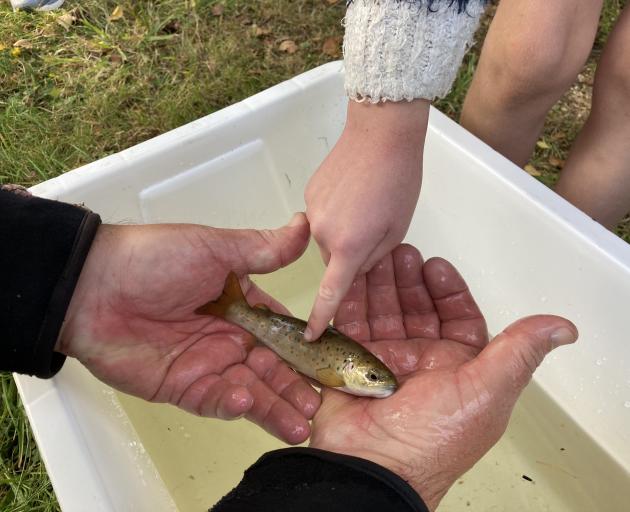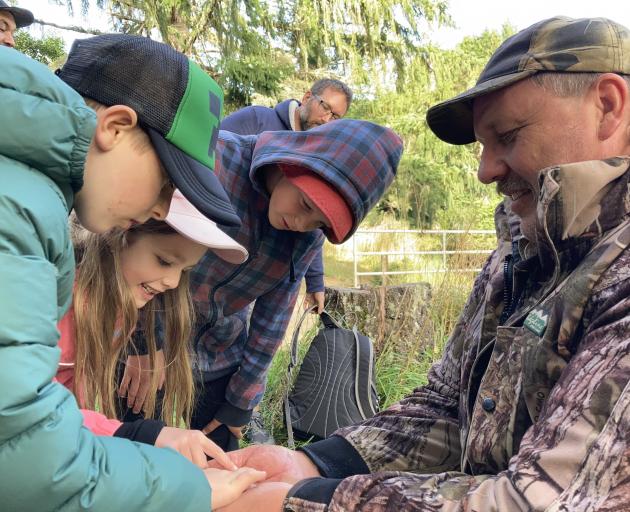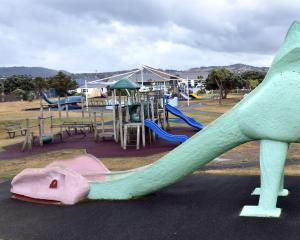Brown trout and freshwater crayfish (koura) were caught and released at an electric fishing demonstration for a group of Fairfield School pupils at Whare Flat on Friday.
The year 5 pupils were learning about waterways thanks to a demonstration run by the Otago Fish & Game Council.

The pupils then got a chance to briefly handle the fish and crayfish.
Electric fishing temporarily stuns fish, eels and koura. They float to the surface, where they can be identified and then returned safely to the water.
Fairfield School teacher Teresa Hickey-Kemmett said it was important children learned about water quality.

"It is also important that our students learn about our waterways as it builds awareness of how lucky we are in New Zealand to have clean water and builds up students’ understanding of why it is so important to look after them for the future," Mrs Hickey-Kemmett said.
The children studied the living world curriculum as part of science studies, she said.
"As Wairoa camp is close to rivers and streams, we focus on this.
"Children explore plants and animals’ life cycles that they may find out in the rivers and streams."

Fish & Game uses electric fishing as part of environmental research.
The method is proving useful for counting trout populations as part of Fish & Game’s Brown Trout Origin research project in the lower Clutha River.
The three-year project is studying where brown trout spawn in the lower Clutha and tributaries from below Roxburgh Dam to the sea.
Findings are due to be released at the end of next year. They will help Fish & Game identify crucial areas to help protect and improve the fishery.
As part of the project, Fish & Game has been electric fishing in streams near Clinton this month.
Comments
Shocking!
It's great that children are being taught about the importance of healthy waterways but is it wise to teach them that it is OK to electrocute animals? And that it is OK to to upset the natural balance of an ecosystem if it profits humans? At the very least I hope the children were taught how fish feel pain just like we do.
Don't get me wrong. I am not trying to push an agenda or ideology onto anyone but I feel that it is important we all do not just dismiss or ignore scientific fact because it is inconvenient or does not fit our own biased aspirations.
"Streams were important because they were a habitat for many native species of plants and animals."... but let's introduce and keep releasing non-native predatory fish species into them anyway.
Imagine if Fish and Game were still breeding and releasing stoats and weasels into the bush...












